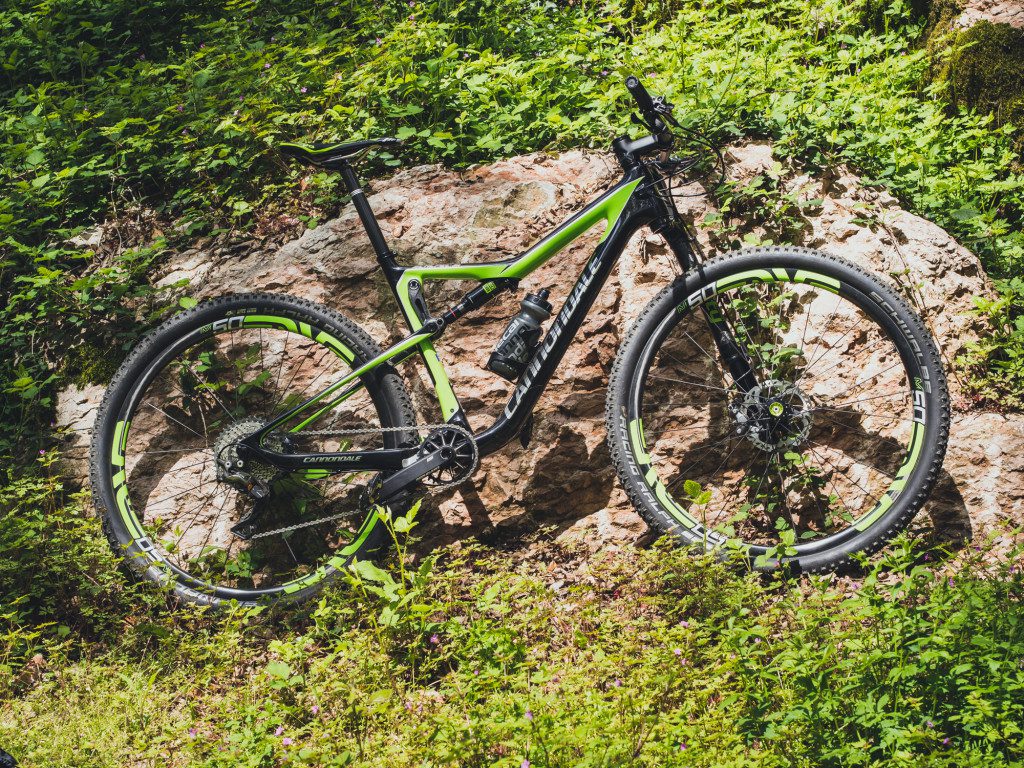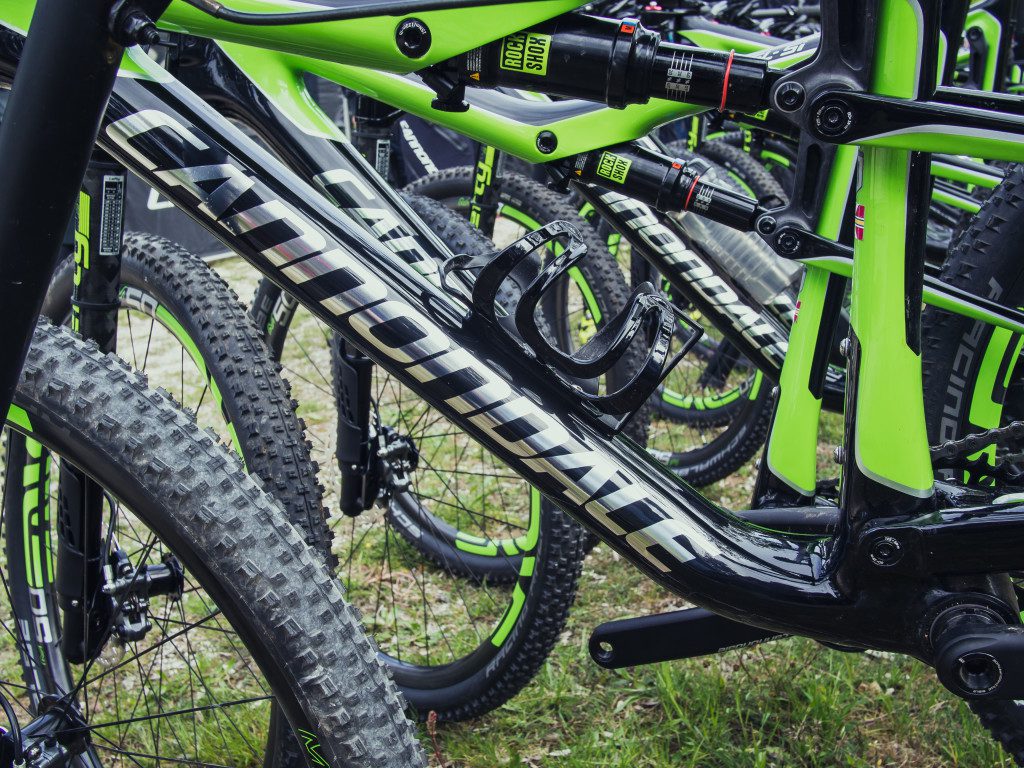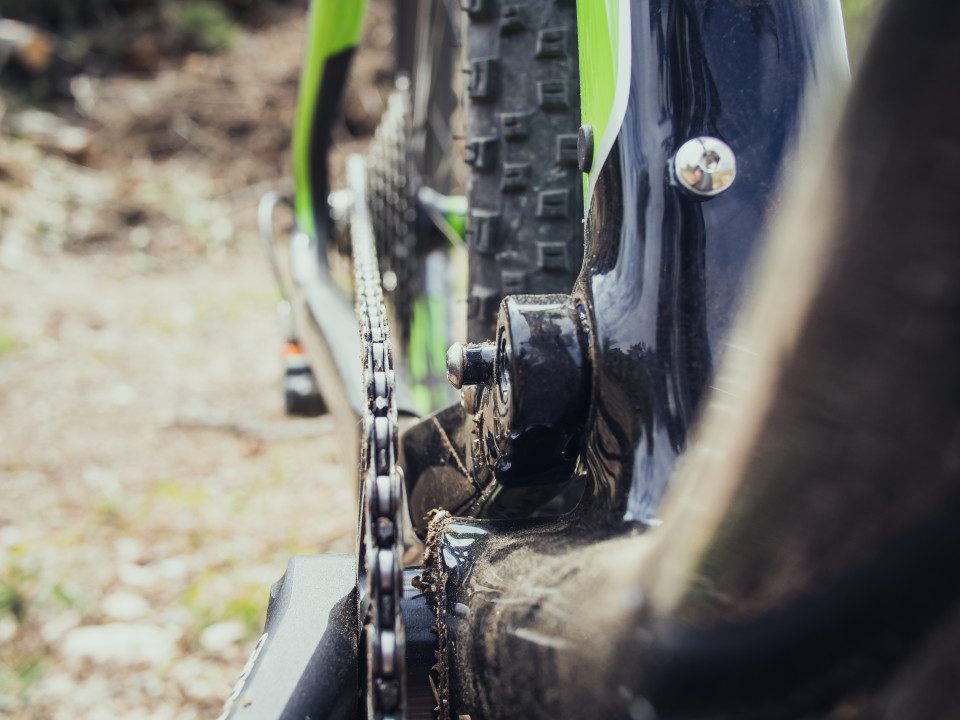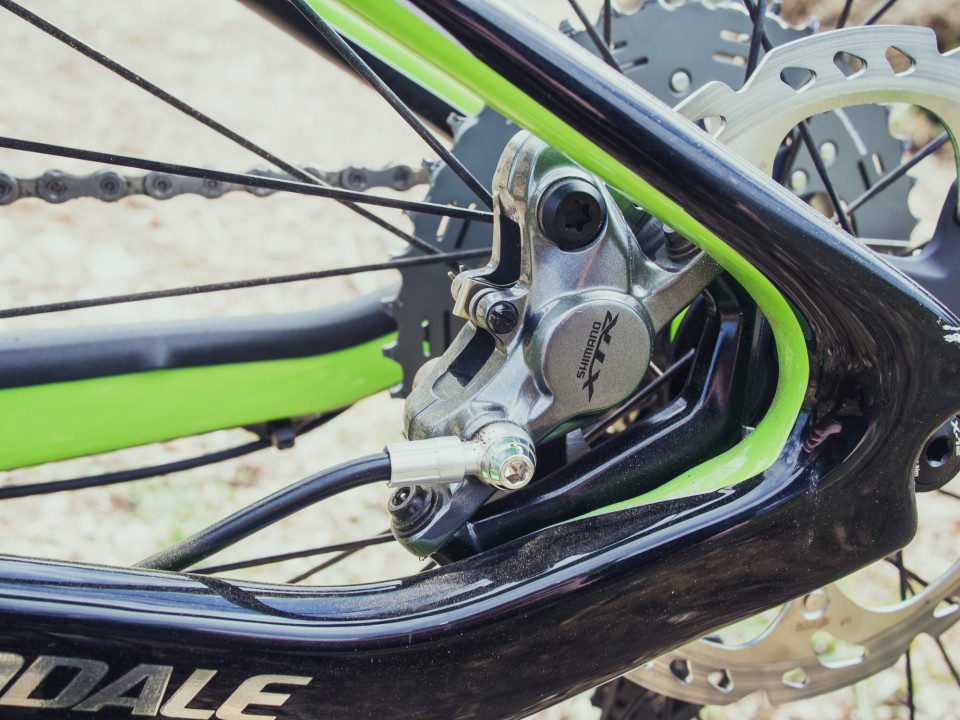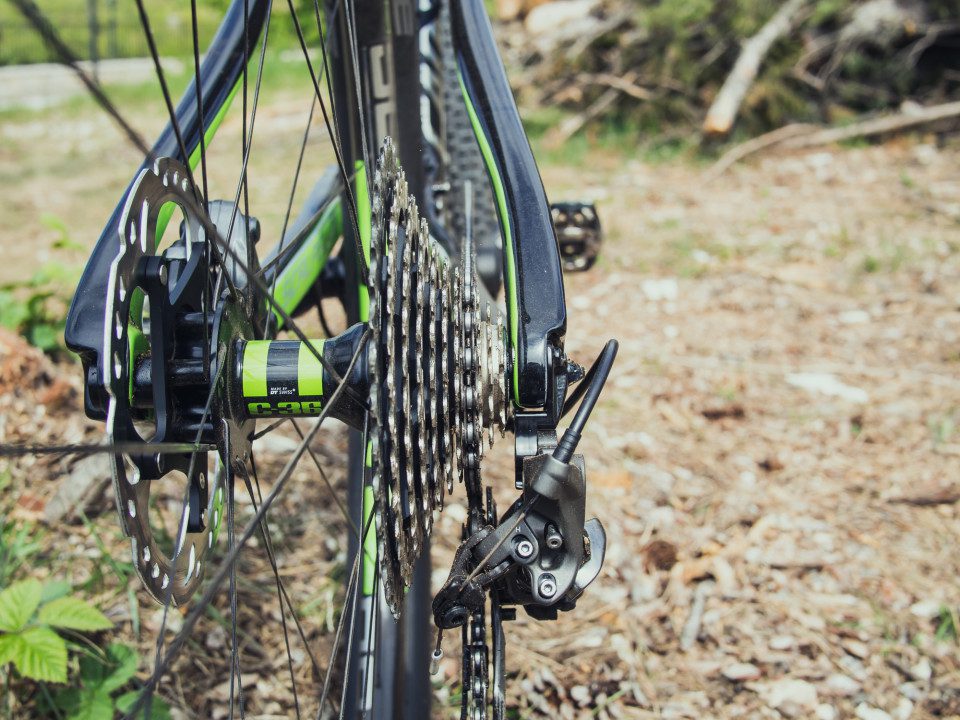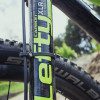First ride on the new Cannondale Scalpel-Si Race in Italy
Putting Cannondale’s full-suspension cross country mountain bike through its paces.

The 2016 Cannonade Scalpel-Si premiered recently in Italy’s Lake Garda region. With four years since the bike’s last revamp, Cannonade had some work cut out for itself to improve upon one of the top XC rigs in the game. So what can you change with one of the lightest, most popular cross country bikes on the pro circuit?
RELATED: Raphaël Gagné’s Cannondale F-SI Black Inc.
Cannonade started where they always do: with feedback from the Cannonade Factory Racing team. Manuel Fumic and Marco Fontana are the team’s top riders. They asked for a bike that could handle all the abuse of the newer, more technical World Cup courses. Cannonade started by slackening the head tube angle to a very relaxed (for an XC race bike) 69.5 degrees. This change would have lengthened the wheel base, so Cannonade decided to offset the Lefty carbon fork by 55 mm to maintain a nimble, shorter wheel base. The design isn’t new: Gary Fisher introduced G2 geometry to its bikes with custom offset forks to help make 29” mountain bikes handle more quickly. The Scalpel maintains even balance throughout the line with offset and geometry tweaks specific to each size, including smaller 27.5” wheels for the small size and women’s models.
Shorter chainstays were also added to help keep the rider’s weight over the back wheel and decrease the likelihood of going over the bars when things get steep and technical. Tightening up the back proved to be one of the more difficult tasks according to the design team. In order to shorten the chainstays, Cannonade had to push the whole drivetrain outboard by 6 mm. The move allowed for more tire clearance as well as ample space for a front derailleur for double-crank setups. The bike also has a flat-mount brake on the chainstay and Cannondale’s Zero-Pivot seatstays. While the flat-mount brakes and lack of a seatstay pivot help to keep things lighter and cleaner looking, the new Asymmetric Integration Offset Drivetrain (Ai) also helps to maintain traction and power transfer while climbing.

Cannondale went with a two-piece carbon rear linkage, shaving some weight from the previous aluminum version. The rear linkage also got some updated hardware to make things lighter, cleaner looking and easier to service, such as the LockR link, which also helps to limit flex. Cannondale was also thinking of serviceability when it included a set of cable-routing adaptors to help with internal routing. The bike comes with several options depending on what cable/hose or wire setup you like. Speaking of wires, another forward thinking innovation can be found in the top tube near the shock mount. With dropper posts gaining popularity in cross country, the Scalpel has an adaptor mount that allows you to house a Di2 battery in the top tube so you can also run a stealth dropper post. My test bike did not come with Di2 or a dropper post, but it did have the XLoc Full Sprint lockout by RockShox on the Lefty 2.0 Carbon fork, which worked flawlessly paired with the Monarch XX shock.

I got a chance to take the Scalpel for a solid test through the trails surrounding Lake Garda. Cannondale says this bike is a hardtail alternative. It certainly felt like an efficient race bike as I ticked over the pedals. The stiffness and efficiency was helped by the very light Cannondale Hollowgram Si Crankset and BB30 configuration. The Scalpel has always been one of the most efficient dual-suspension bikes, so it was no surprise the 2017 Scalpel delivered in this category. The big surprise, however, came when I pointed it downhill.
The slacker head tube and shorter chainstays really give you confidence charging into steeper technical trails, where a traditional XC geometry would have you straight-armed and hanging over the rear wheel. Making corrections at speed through rough sections was handled with ease, helped out by the slightly shorter spec’d stem and wider 760-mm handlebars. The 100 mm of travel at front and rear does a great job of soaking up the bumps, but still allows you to roll and even skip over obstacles while holding your line. After a few minor air pressure changes and rebound adjustments, it was easy to get the suspension performing well on small bumps maintaining traction while climbing as well as soaking up larger obstacles while at speed going downhill. Put a set of 2.3”-wide tires with some decent knobs and a dropper post on this bike and you’re flirting with trail bike capabilities.
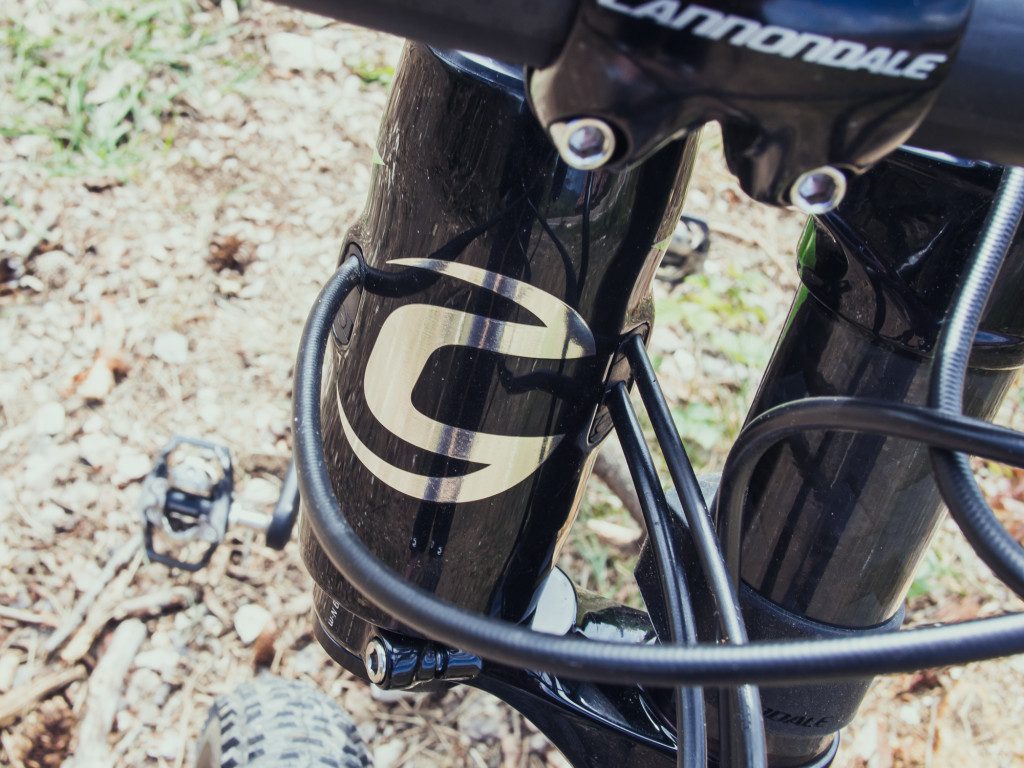
Fast and flowing trail was probably the most fun to ride on the Scalpel: putting down the power when you can and allowing the slightly slower steering to hold your chosen line and give you the confidence for popping off rollers and taking on some smaller drops. You’ve seen this type of riding on the 2016 World Cup course in Cairns, Australia. Although you aren’t seeing people win any World Cup races on the descents, you’ve certainly seen them lost there. The new Scalpel is Cannondale’s tool for getting down hills to say in the race.
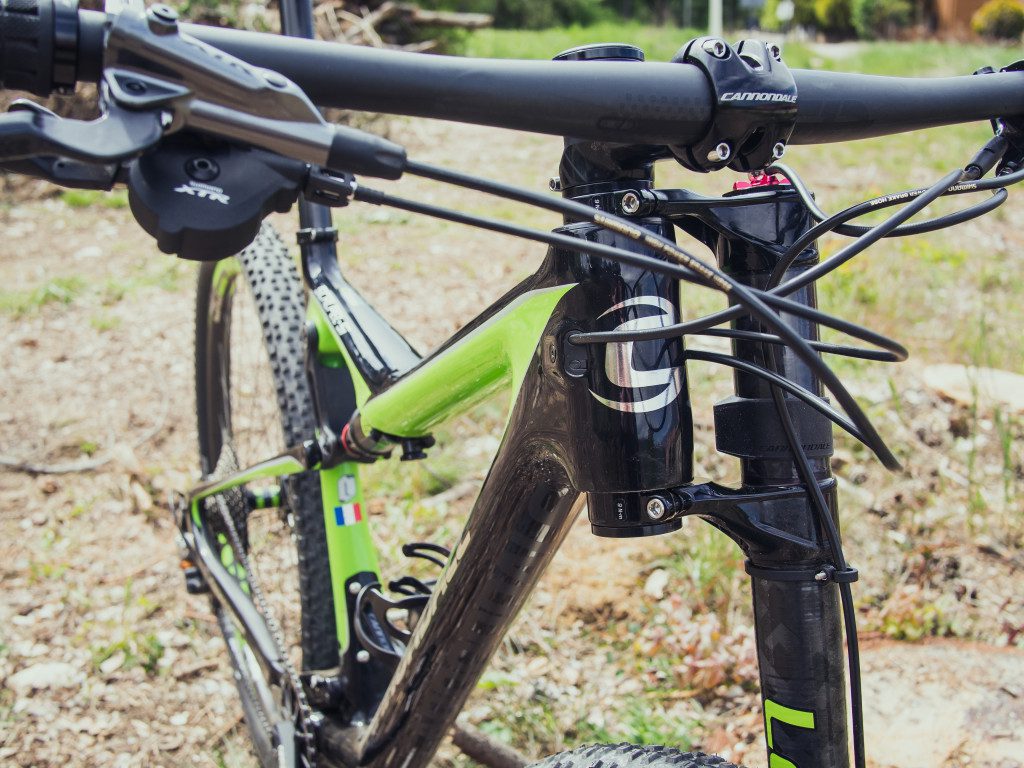
Point the front wheel uphill, and you won’t be disappointed. The pedalling efficiency and weight allow you to propel up climbs with ease. Climbing out of the saddle was also a blast with the 760-mm wide handlebar. You can rock the bike back and forth easily with barley any flex. I also noticed the slacker head tube on the climbs. When things get really steep, you need to focus on keeping your weight forward to ensure good front-wheel traction. On moderate climbs, however, the geometry allows you to pop the front wheel easily over obstacles. The rear suspension can then soak up any bumps and keep traction in almost all conditions. It was a dry day during my test, so I hope to try the bike later on different surfaces. Only four out of 10 models in the line come with double chainrings, including one of the two women’s models. With the way the Scalpel was climbing, I don’t see the need for the extra ring up front. Although, it’s nice to have the options.
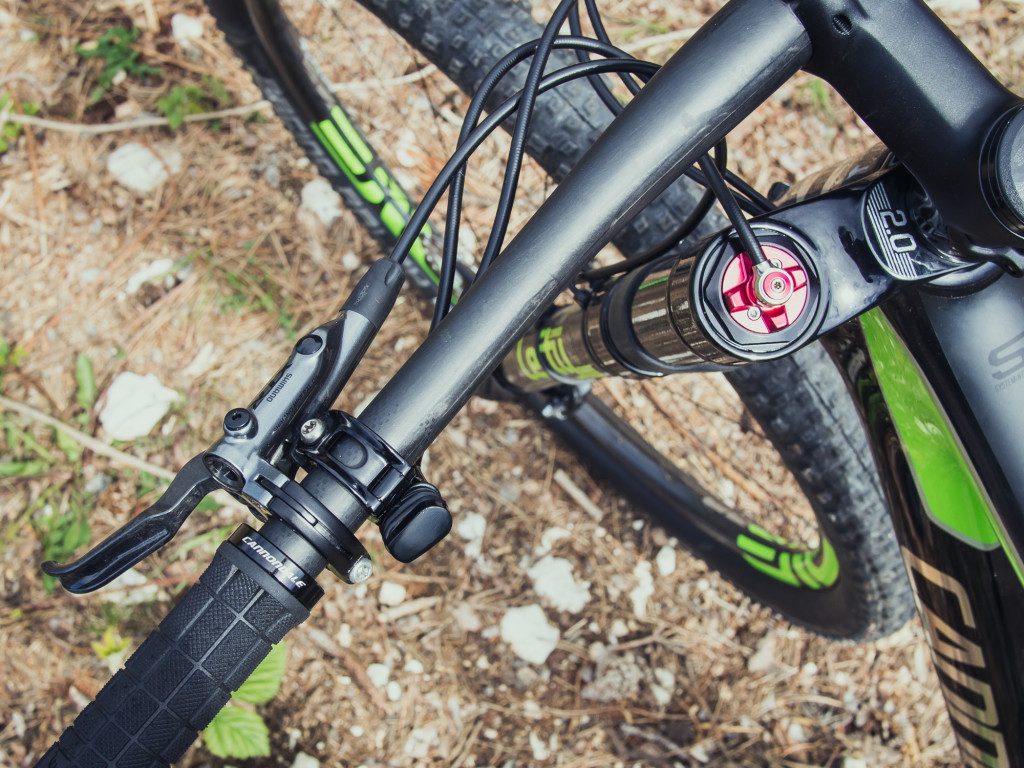
The test bike model was the Si Race with Shimano XTR 1 x 11 shifting and matching XTR brakes. It rolled on a set of Enve M50 carbon wheels. This model comes in at $10,070. There are two models above the Race in the line: the Team, spec’d with the new SRAM Eagle 1 x 12, and Black Inc., which is Di2-equipped and costs $15,000. Other models include the entry-level aluminum frame at $3,765 (available summer 2016). Cannonade has done a good job of offering everyone from the privateer weekend warrior to the seasoned World Cup veteran all the advantages the new design can give.
Cannondale says they designed this bike for XXC. The extra ‘X’ is in reaction to the increasingly more technical World Cup race courses. I think they really delivered in this category. The Scalpel is a thoroughbred dual-suspension race bike that will tackle any trail you throw at it. Will this bike be for everyone? Probably not, but with all the selection in travel and geometry options these days, it’s nice to see a company paying attention to where everything started, and really trying to push the envelope for cross country racing.
